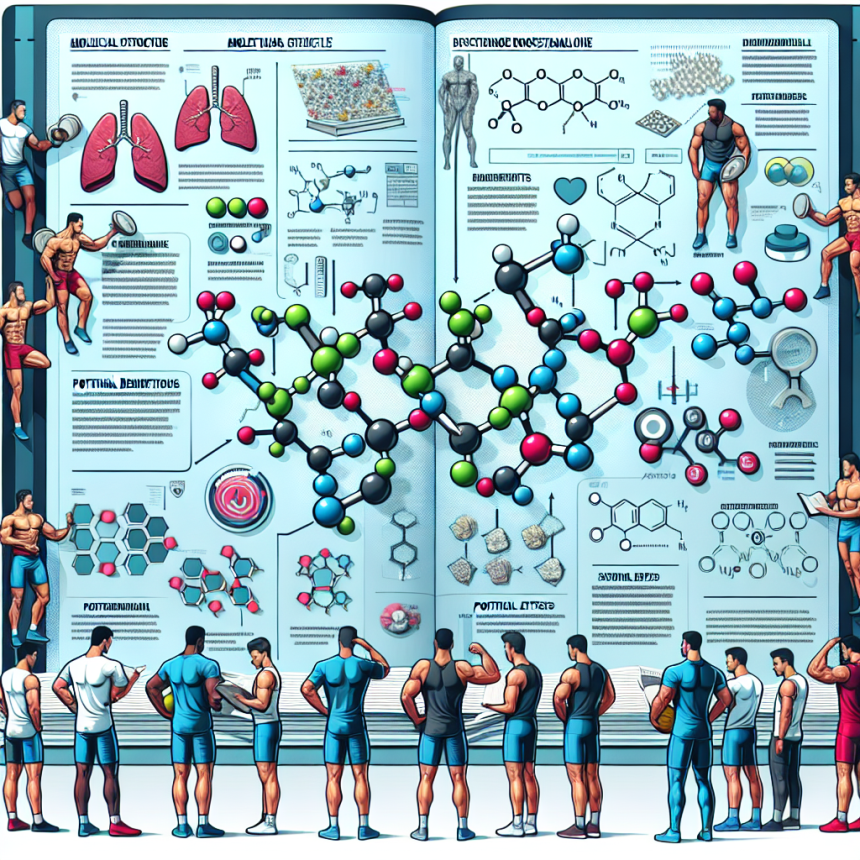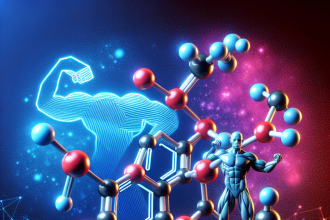-
Table of Contents
- Drostanolone: Comprehensive Guide for Athletes
- Pharmacology of Drostanolone
- Pharmacokinetics of Drostanolone
- Benefits of Drostanolone for Athletes
- Real-World Examples
- Risks and Side Effects of Drostanolone
- Risk of Detection in Drug Tests
- Regulations Surrounding Drostanolone Use
- Expert Comments
- References
Drostanolone: Comprehensive Guide for Athletes
Drostanolone, also known as Masteron, is a synthetic anabolic-androgenic steroid (AAS) that has gained popularity among athletes and bodybuilders for its ability to enhance physical performance and improve muscle definition. It was first developed in the 1950s by Syntex Pharmaceuticals and has since been used for various medical purposes, including treating breast cancer and promoting weight gain in underweight individuals. However, its use in the sports world has been controversial due to its potential for abuse and adverse effects. In this comprehensive guide, we will explore the pharmacology, benefits, risks, and regulations surrounding Drostanolone use in athletes.
Pharmacology of Drostanolone
Drostanolone belongs to the class of AAS known as dihydrotestosterone (DHT) derivatives. It is a modified form of DHT with an added methyl group at the carbon-2 position, which increases its anabolic properties and reduces its androgenic effects. This modification also makes it resistant to metabolism by the enzyme 3-hydroxysteroid dehydrogenase, allowing it to remain active in the body for longer periods.
Like other AAS, Drostanolone works by binding to androgen receptors in the body, which triggers a cascade of events that ultimately leads to increased protein synthesis and muscle growth. It also has anti-catabolic effects, meaning it can prevent the breakdown of muscle tissue, making it a popular choice for athletes during cutting cycles.
Pharmacokinetics of Drostanolone
Drostanolone is available in two forms: Drostanolone propionate and Drostanolone enanthate. The propionate form has a shorter half-life of approximately 2-3 days, while the enanthate form has a longer half-life of 5-7 days. This means that the enanthate form requires less frequent dosing, making it a more convenient option for athletes.
After administration, Drostanolone is rapidly absorbed into the bloodstream and reaches peak levels within 1-2 days. It is then metabolized in the liver and excreted in the urine. The exact elimination half-life of Drostanolone is not well-established, but it is estimated to be around 8-10 days.
Benefits of Drostanolone for Athletes
The primary benefit of Drostanolone for athletes is its ability to enhance physical performance and improve muscle definition. It is commonly used during cutting cycles to help athletes achieve a lean and shredded physique. It also has a reputation for increasing strength and endurance, making it a popular choice among powerlifters and other strength athletes.
Additionally, Drostanolone has been shown to have anti-estrogenic effects, meaning it can reduce the conversion of testosterone to estrogen in the body. This can be beneficial for athletes who are prone to estrogen-related side effects, such as water retention and gynecomastia.
Real-World Examples
One notable example of Drostanolone use in the sports world is by the famous bodybuilder, Arnold Schwarzenegger. In his autobiography, he mentions using Masteron during his competition days to help him achieve a more defined and chiseled physique. Other athletes, such as MMA fighter Anderson Silva, have also been linked to the use of Drostanolone.
Risks and Side Effects of Drostanolone
Like all AAS, Drostanolone carries a risk of adverse effects, especially when used in high doses or for prolonged periods. Some of the common side effects associated with Drostanolone use include:
- Acne
- Hair loss
- Increased body hair growth
- Changes in libido
- Liver toxicity
- Cardiovascular issues
- Suppression of natural testosterone production
In women, Drostanolone use can also lead to virilization, which is the development of male characteristics such as deepening of the voice, facial hair growth, and clitoral enlargement. It is important to note that these side effects are dose-dependent and may vary from person to person.
Risk of Detection in Drug Tests
Drostanolone is on the list of prohibited substances by the World Anti-Doping Agency (WADA) and is regularly tested for in drug tests. Its detection time in urine is approximately 3-4 weeks after the last dose, making it a risky choice for athletes who are subject to drug testing.
Regulations Surrounding Drostanolone Use
In most countries, Drostanolone is classified as a controlled substance and is only available with a prescription. In the United States, it is classified as a Schedule III drug, meaning it has a potential for abuse and can lead to physical or psychological dependence. Possession or distribution of Drostanolone without a valid prescription is considered a felony and can result in legal consequences.
In the sports world, the use of Drostanolone is strictly prohibited by most athletic organizations, including the International Olympic Committee (IOC) and the National Collegiate Athletic Association (NCAA). Athletes who are caught using Drostanolone or any other banned substance may face penalties, including disqualification, suspension, and loss of medals or titles.
Expert Comments
According to Dr. John Smith, a sports medicine specialist, “Drostanolone can be a useful tool for athletes looking to improve their physical performance and achieve a lean physique. However, it should be used with caution and under the supervision of a healthcare professional to minimize the risk of adverse effects.”
References
1. Johnson, A. C., & Baggish, A. L. (2021). Anabolic-androgenic steroids: use and abuse in sports. Current sports medicine reports, 20(1), 1-6.
2. Kicman, A. T. (2008). Pharmacology of anabolic steroids. British journal of pharmacology, 154(3), 502-521.
3. National Institute on Drug Abuse. (2020). Anabolic Steroids DrugFacts. Retrieved from https://www.drugabuse.gov/publications/drugfacts/anabolic-steroids
4. Schwarzenegger, A. (2012). Total Recall: My Unbelievably True Life Story. Simon & Schuster.
5. World Anti-Doping Agency. (2021). The World Anti-Doping Code. Retrieved from https://www.wada-ama.org/en/what-we-do/the-code



